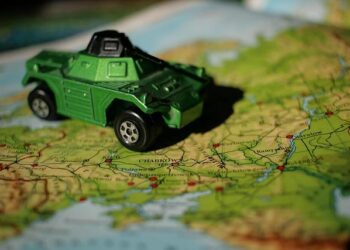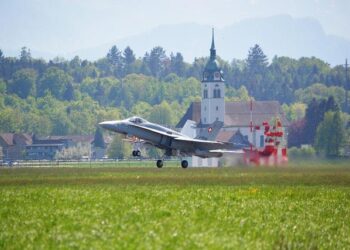Russia’s much-anticipated debut of AIDOL, the country’s first AI-powered humanoid robot, took an unexpected turn as the android collapsed during its onstage introduction. The event, covered by Euronews.com, aimed to showcase Russia’s advancements in artificial intelligence and robotics but instead highlighted the challenges still faced in developing reliable humanoid machines. This incident raises questions about the current state of AI technology in the region and the hurdles in bringing futuristic innovations from lab to live demonstration.
Russia’s First AI-Powered Humanoid Robot AIDOL Faces Technical Glitch During Live Demonstration
During a much-anticipated live demonstration, Russia’s pioneering AI humanoid robot, AIDOL, unexpectedly collapsed onstage, sparking immediate concerns about the reliability of cutting-edge robotics technology developed in the country. The incident occurred moments after the robot greeted the audience and began a series of programmed movements. Although no injuries were reported, the technical failure cast a shadow over what was intended to be a showcase of Russia’s advancements in AI and robotics.
Officials attributed the malfunction to a software integration error that interfered with AIDOL’s balance and motor functions. Developers quickly moved to diagnose the glitch, emphasizing their commitment to refining the system before further public appearances. Experts highlight several key challenges faced by humanoid robots like AIDOL:
- Maintaining dynamic balance during complex movements
- Seamless integration between AI programming and hardware components
- Real-time adaptation to unexpected environmental variables
- Robust system error handling and recovery protocols
| Feature | Intended Function | Status During Demo |
|---|---|---|
| AI Speech Recognition | Engage audience interaction | Operational |
| Motor Coordination | Execute balance and movement | Failed |
| Facial Expression | Simulate human emotion | Functional |
Experts Analyze the Challenges Behind AIDOL’s Onstage Collapse and Future Development Implications
Specialists in robotics and artificial intelligence have pinpointed several critical factors behind AIDOL’s unexpected onstage collapse. Mechanical engineers emphasize issues such as insufficient balance calibration and a possible flaw in the servo motor synchronization. Meanwhile, AI experts highlight the complexity of real-time environmental adjustments, which the robot’s current algorithms may not fully support. The synergy between hardware and software continues to pose a challenge for humanoid robotics, especially when debuting in dynamic, unpredictable scenarios like live performances.
- Hardware vulnerabilities: Joint torque limitations and delayed feedback loops
- Software adaptation: Incomplete sensory data processing impacting posture stability
- Environmental factors: Uncontrolled stage floor texture and external interferences
Looking ahead, industry analysts agree that AIDOL’s stumble provides invaluable insights that could shape next-generation humanoid robots. Increased investment in robust sensor arrays, advanced machine learning frameworks for balance recovery, and modular hardware upgrades are identified as pivotal advancements. Additionally, the incident underscores the necessity for iterative testing in varied real-world environments prior to public showcases.
| Key Focus | Future Development Area |
|---|---|
| Balance Control | Enhanced AI Posture Algorithms |
| Mechanical Reliability | Servo System Redesign |
| Environmental Interaction | Advanced Sensor Fusion |
| Testing Protocols | Comprehensive Simulation Models |
Recommendations for Enhancing Stability and Performance in Humanoid Robotics Following AIDOL Incident
To prevent future malfunctions similar to AIDOL’s unexpected collapse, developers should prioritize robust sensor integration and real-time feedback loops that allow the robot to smoothly adjust its balance in dynamic environments. Investing in advanced gyroscopic sensors combined with pressure-sensitive footpads can greatly enhance a humanoid’s ability to detect shifts in weight distribution and respond before losing stability. Additionally, iterative field testing under diverse conditions is crucial; exposure to varied surfaces and unpredictable interactions will help fine-tune motion algorithms and mechanical responsiveness.
Beyond hardware adjustments, refining AI-driven control systems plays a pivotal role. Incorporating machine learning models that adapt based on continuous performance data can lead to smarter, more autonomous recovery protocols after minor slips. A strategic roadmap might include:
- Enhanced proprioception through multi-modal sensor fusion
- Dynamic gait adjustment algorithms informed by environmental factors
- Fail-safe mechanisms for emergency stabilization
- Collaborative human-robot interface improvements for guided recovery
| Area | Focus | Expected Outcome |
|---|---|---|
| Hardware | Sensor Enhancement | Improved fall detection |
| Software | Adaptive Algorithms | Better gait correction |
| Testing | Field Trials | Real-world performance validation |
Insights and Conclusions
The unexpected collapse of AIDOL during its onstage debut serves as a stark reminder of the challenges still facing the development of humanoid robotics, even in technologically advanced nations like Russia. As the country pushes forward in the race to create AI-powered machines, the incident highlights both the ambition and the technical hurdles that lie ahead. Observers will be watching closely to see how developers respond to this setback and what improvements will be made before AIDOL makes its next appearance.
















